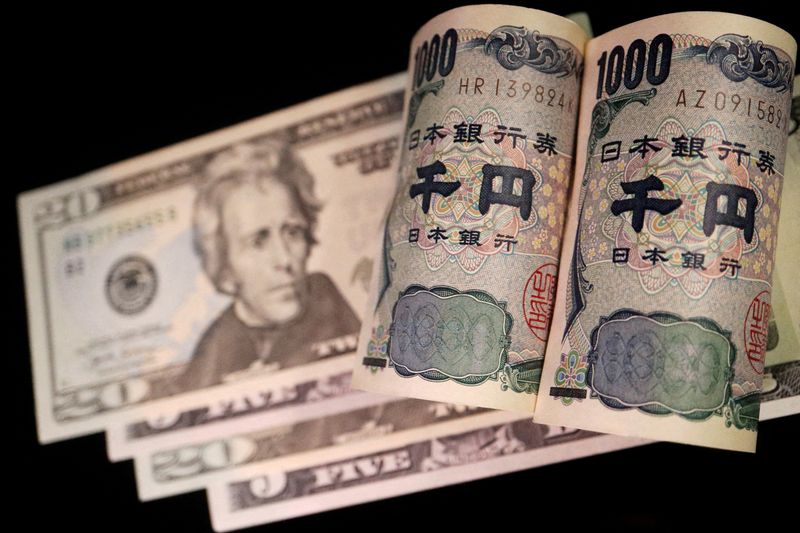 © Reuters. FILE PHOTO: Banknotes of Japanese yen and U.S. dollar are seen in this illustration picture taken September 23, 2022. REUTERS/Florence Lo/Illustration/File Photo
© Reuters. FILE PHOTO: Banknotes of Japanese yen and U.S. dollar are seen in this illustration picture taken September 23, 2022. REUTERS/Florence Lo/Illustration/File Photo
By Saqib Iqbal Ahmed
NEW YORK (Reuters) -The U.S. dollar was modestly higher against a basket of currencies on Thursday after data showed the U.S. economy grew at its fastest pace in nearly two years in the third quarter, once again defying dire warnings of a recession that have lingered since 2022.
Gross domestic product increased at a 4.9% annualized rate last quarter, the fastest since the fourth quarter of 2021, the Commerce Department's Bureau of Economic Analysis said in its advance estimate of third-quarter GDP growth. Economists polled by Reuters had forecast GDP rising at a 4.3% rate.
The dollar index, which measures its strength against a basket of six rivals, was 0.0% higher at 106.58. The index hit a near 3-week high of 106.89 earlier in the session.
"It is reinforcing the message that the U.S. is sort of hanging in there on the economic side and inflation is also remaining somewhat stubborn," said Brad Bechtel, global head of FX at Jefferies in New York.
"At the margin, that helps the dollar," Bechtel said.
The GDP numbers follow business activity data earlier this week that highlighted the strength of the U.S. economy relative to the United Kingdom and the European Union.
"The strong Q3 GDP result reinforces the market tension between good data on the one hand and the prospect of higher rates and a more restrictive Fed on the other," Brian Rose, senior U.S. economist at UBS, said in a note.
"That's likely to continue generating market choppiness until investors are confident that the economy is cooling but not collapsing and the rate shock is over," Rose said.
Meanwhile, the European Central Bank left interest rates unchanged as expected on Thursday, snapping an unprecedented streak of 10 consecutive rate hikes while insisting that any talk of rate cuts was premature.
"The statement is very similar to the one in September. Obviously, they had to acknowledge the fact that inflation dropped, which was also what they expected, but ultimately they are still trying to hang on to some sort of hawkish bias saying that inflation remains too high," said Francesco Pesole, FX strategist at ING in London.
The euro was 0.03% lower at $1.0564.
The Japanese yen weakened to hit a fresh one-year low of 150.78 per dollar and was not far off the 32-year low of 151.94 it touched in October last year, which led to Japanese authorities intervening in the currency market.
Japanese Finance Minister Shunichi Suzuki earlier warned traders against selling the yen again, saying authorities were closely watching moves. He made no direct comment about the potential for intervention.
A recent surge in global interest rates is heightening pressure on the Bank of Japan to change its bond yield control next week.
Japan's low yields have made the currency an easy target for short-sellers and funding trades, with the widening gap in interest rates between Japan and the United States leading to persistent weakness in the yen.
Any FX market intervention by Japanese authorities would depend not just on the trading level of the yen but also its volatility, Jefferies' Bechtel said. The BoJ is set to hold their monetary meeting from Oct. 30-31.
"Maybe they are waiting for that event to be out of the way," Bechtel said.
The Australian dollar was 0.3% higher at $0.633. It touched a one-year low of $0.6271 earlier in the session.
The head of Australia's central bank on Thursday said the surprisingly high reading for Australian inflation on Wednesday was around policymakers' expectations, and they were still considering whether it would warrant a rate rise.
In cryptocurrencies, bitcoin was down 1.2% at $34,084. The world's largest cryptocurrency has surged 14% this week on speculation that an exchange-traded bitcoin fund is imminent.

